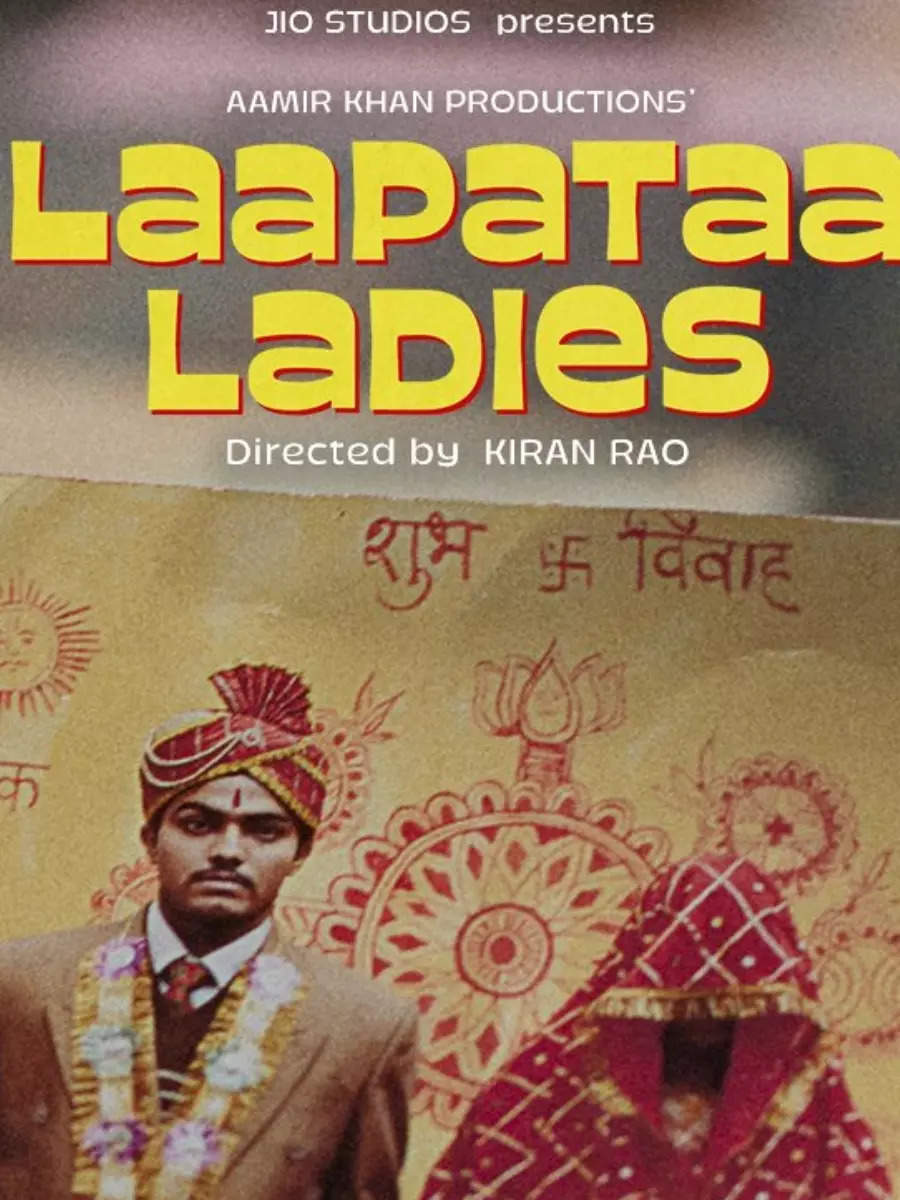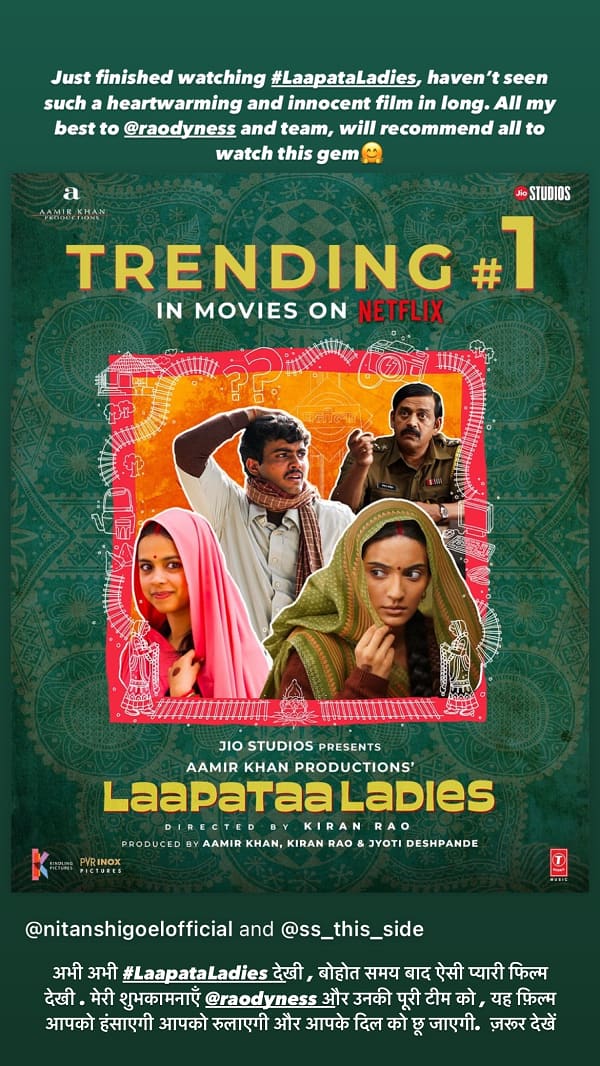How does a seemingly simple story of two lost brides turn into a cultural phenomenon? A film that captures the essence of rural India, its traditions, and its humor has taken the world by storm. Directed by Kiran Rao, Laapataa Ladies (2023) is more than just another Bollywood comedy-drama. It dives deep into the heart of human relationships, mistaken identities, and the chaos that ensues when two young brides go missing from a train in 2001. Set against the backdrop of rural India, this cinematic masterpiece resonates with audiences worldwide, proving that storytelling transcends borders and languages.
The narrative unfolds as two brides, bound for their respective weddings, accidentally disembark at the wrong station during a train journey. What starts as a minor mishap quickly escalates into a whirlwind of confusion, misunderstandings, and hilarity. The film cleverly uses this premise to explore themes such as family dynamics, societal expectations, and the resilience of women in challenging situations. With its vibrant cinematography, authentic portrayal of rural life, and an ensemble cast delivering stellar performances, Laapataa Ladies stands out as one of the most captivating films of recent years. Moreover, it was selected as India's official entry for the Oscars, sparking both praise and controversy within the industry.
| Personal Information | Details |
|---|---|
| Name | Kiran Rao |
| Date of Birth | March 18, 1974 |
| Place of Birth | Mumbai, Maharashtra, India |
| Education | Film Studies, University of California, Los Angeles (UCLA) |
| Career Highlights | Director, Producer; Known works include Dhobi Ghat (2010), Laapataa Ladies (2023) |
| Awards | National Film Award for Best Feature Film on National Integration (Dhobi Ghat) |
| Official Website | Kiran Rao Official Site |
One cannot discuss Laapataa Ladies without acknowledging the director's masterful direction. Kiran Rao, known for her nuanced storytelling and ability to blend social commentary with entertainment, brings her signature style to this project. Her keen eye for detail ensures every frame feels authentic, whether it’s capturing the bustling energy of a village fair or the quiet moments between characters. Rao collaborates seamlessly with her team, including cinematographer Anuj Dhawan, who paints each scene with vivid colors, and editor Namrata Rao, whose precise cuts keep the audience engaged throughout.
The film's success can also be attributed to its stellar cast. Leading ladies Raveena Tandon and Esha Gupta deliver powerhouse performances, portraying the titular brides with charm and wit. Supporting actors like Ravi Kishan and Sharman Joshi add layers of humor and depth to their roles, making them unforgettable. The chemistry among the ensemble cast elevates the film beyond mere slapstick comedy, turning it into a heartfelt exploration of friendship and community.
Music plays a pivotal role in enhancing the emotional resonance of Laapataa Ladies. Composed by A.R. Rahman, the soundtrack features tracks that range from peppy numbers celebrating marriage festivities to soulful melodies reflecting personal struggles. Songs like Mere Piya Gale Lag Jaa and Tere Bina Zindagi Se have become instant classics, further cementing the film's place in pop culture history. The lyrics, penned by Gulzar, are poetic yet relatable, adding another layer of richness to the narrative.
Beyond its entertainment value, Laapataa Ladies addresses important social issues. Through subtle storytelling techniques, the film critiques outdated customs while celebrating the strength of women navigating complex circumstances. For instance, one subplot explores how arranged marriages often prioritize tradition over individual happiness, prompting viewers to reflect on contemporary attitudes toward love and commitment. Another storyline highlights the importance of communication and empathy in resolving conflicts, reinforcing universal values applicable across cultures.
Since its release, Laapataa Ladies has garnered widespread acclaim from critics and audiences alike. Critics praised the film for its fresh take on familiar tropes, noting how it successfully balances humor with poignant observations about modern Indian society. Audiences responded enthusiastically, flocking to theaters and streaming platforms to experience the magic firsthand. Its selection as India's official entry for the Oscars generated significant buzz, though some questioned the choice given the stiff competition from other acclaimed films released that year.
Streaming services played a crucial role in expanding the reach of Laapataa Ladies. Platforms like Netflix made the film accessible to global audiences, allowing people from different parts of the world to appreciate its unique blend of humor and heart. Meanwhile, regional platforms such as BiliBili offered fans in Southeast Asia the opportunity to enjoy high-definition versions of the movie. Social media platforms like TikTok contributed to its popularity through viral clips and challenges inspired by memorable dialogues and scenes.
In addition to its theatrical run, Laapataa Ladies became available for download and streaming in various formats, ensuring maximum accessibility for viewers. Websites offering downloads in HD quality, such as those hosting files in 720p and 1080p resolutions, catered to tech-savvy audiences seeking premium viewing experiences. Dailymotion hosted full-length versions of the film, enabling users to watch it conveniently from anywhere. These efforts collectively helped maintain the film's momentum long after its initial release.
Despite its overwhelming success, Laapataa Ladies faced criticism regarding its representation of certain communities and stereotypes. Some argued that while the film aimed to challenge traditional norms, it occasionally relied on caricatures that could reinforce negative perceptions. Others felt that the pacing faltered in places, detracting slightly from the overall impact. Nevertheless, these criticisms did little to dampen the film's popularity, as most viewers appreciated its intent and execution.
As India's official submission for the Oscars, Laapataa Ladies sparked debates about the selection process itself. The Film Federation of India (FFI), responsible for choosing the country's representative each year, came under scrutiny for perceived biases and lack of transparency. While supporters defended the decision, citing the film's universal appeal and technical excellence, detractors pointed out equally deserving contenders overlooked in favor of commercial viability. Regardless of the outcome, the nomination underscored the growing recognition of Indian cinema on the international stage.
Ultimately, Laapataa Ladies serves as a testament to the power of storytelling. By combining elements of comedy, drama, and social commentary, it appeals to diverse audiences while staying true to its roots. Its journey from conception to global acclaim reflects the dedication and talent of everyone involved in bringing this vision to life. As discussions around its merits continue, one thing remains clear—this film will remain etched in the annals of cinematic history for generations to come.




